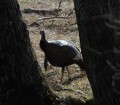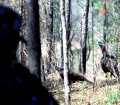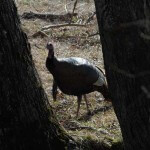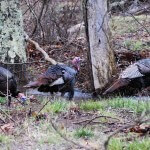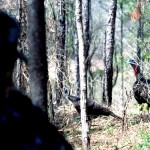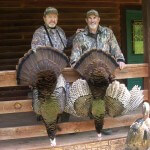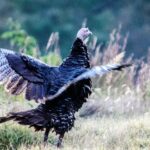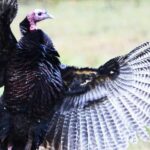John’s Note: Hunting a turkey is different than calling a turkey. To take a turkey by hunting and not calling, you must learn the tom’s daily routine from when he flies off the roost and then flies back up. You also need to know where the turkey’s going and when he should arrive. Then you may can bag that bird without calling him. David Hale of Cadiz, Kentucky, co-founder of Knight & Hale Game Calls (www.knightandhale.com), was known as a turkey taker before he learned to use a turkey call. To become a master of the sport of turkey, Hale believes that a hunter must learn to hunt turkeys first and to call them secondly. As the late 5-time World Champion turkey caller Ben Rodgers Lee always said, “There are some turkeys that if you call to them, you’ll never take them.”
 When I returned to the store and told them about killing a turkey (see yesterday’s post), they were all duly impressed. I continued to use this tactic for about 5 years and was successful in bagging two birds and probably spooking 10 more.
When I returned to the store and told them about killing a turkey (see yesterday’s post), they were all duly impressed. I continued to use this tactic for about 5 years and was successful in bagging two birds and probably spooking 10 more.
Later I had a buddy named Marvin. In 1971 when there were only five turkeys killed at LBL, Marvin was one of the men who had taken a turkey. He and I got to talking one day about this bushwhacking technique, and I told him, “Look, Marvin, we’re not only some of the few hunters up here who have heard and seen a turkey, we’ve also each killed one. Everybody thinks we are experts. Why some folks who know I’ve killed two toms think I’m the greatest in the world. And Marvin, being thought well of by your friends is worth something.”
I guess Marvin and I did have a great deal of turkey knowledge. I had learned about what turkeys do, why they do it, and what kind of noises they made. I understood that the most-important sound to recognize was the sound of a turkey strutting, because there are numerous turkeys that will strut and won’t gobble. Unless you can identify the sound of a turkey strut, you may walk off and leave gobblers that are within killing distance. The advantage of being able to hear a turkey strut is when that old boy is showing off his manhood, he is absolutely confident that there is no danger anywhere near. Therefore, you can move on him and move around him much easier, than if he is looking for you.
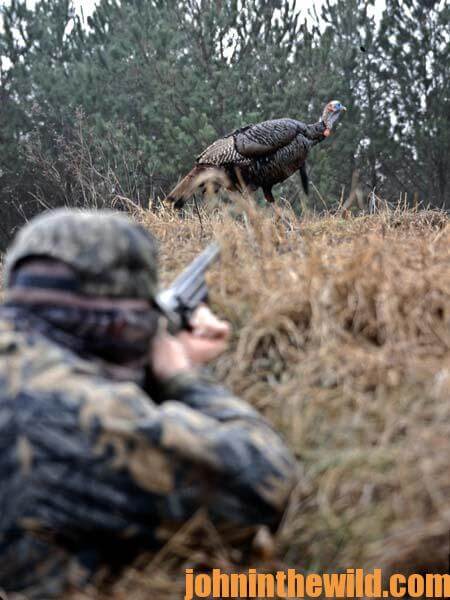 In those days when I heard a turkey strutting, I tried to move to within 30 yards of the gobbler – always attempting to stay below or above him, so that he more than likely wouldn’t see me. I never wanted to be on the same plane with the turkey. I always attempted to take the bird after he quit strutting – when he had decided to walk off. I just wanted to be in the path that he would take when he walked out of his strutting area.
In those days when I heard a turkey strutting, I tried to move to within 30 yards of the gobbler – always attempting to stay below or above him, so that he more than likely wouldn’t see me. I never wanted to be on the same plane with the turkey. I always attempted to take the bird after he quit strutting – when he had decided to walk off. I just wanted to be in the path that he would take when he walked out of his strutting area.
To learn more about turkey hunting from the masters, get these Kindle eBooks and print books by John E. Phillips, including: “The Turkey Hunter’s Bible (available as an eBook or in paperback),” “PhD Gobblers: How to Hunt the Smartest Turkeys in the World,” “Turkey Hunting Tactics,” “How to Hunt Turkeys with World Champion Preston Pittman,” “The 10 Sins of Turkey Hunting with Preston Pittman,” and “Outdoor Life’s Complete Turkey Hunting.” Click here to get these books. To get John’s newest book, “The Turkey Gobbler Getter Manual,” for free, Click here.

